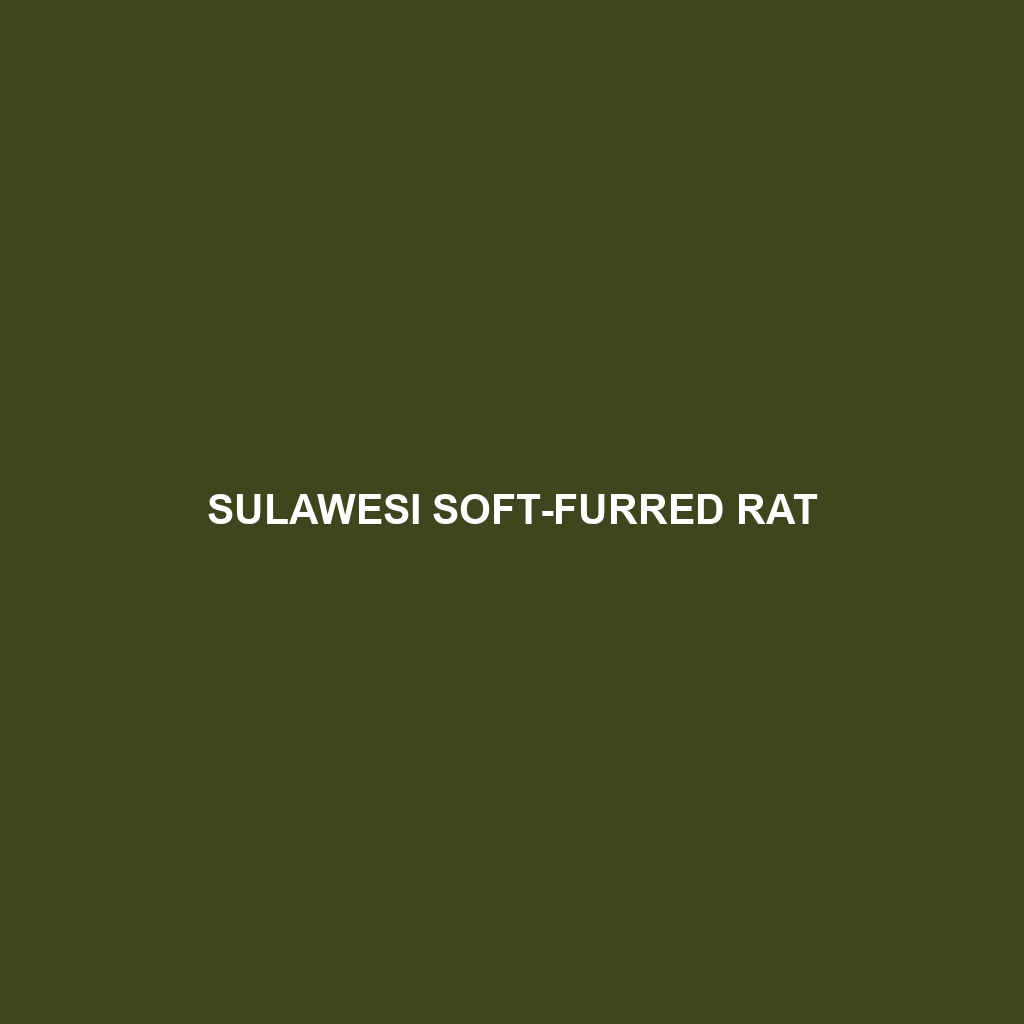Common Name: Sulawesi Soft-furred Rat
Scientific Name: Halmaheramys hebridensis
Habitat:
The Sulawesi Soft-furred Rat is primarily found in the dense rainforests of Sulawesi, Indonesia. These rodents inhabit lower to mid-elevation forested areas, specifically in regions with high humidity and an abundance of vegetation. The species is adapted to thrive in tropical environments, particularly in undisturbed forest habitats where they can find shelter and food.
Physical Characteristics:
This rat species is characterized by its soft, dense fur that offers camouflage against the forest floor. Adult Sulawesi Soft-furred Rats typically measure around 20 to 25 cm in body length, excluding the tail, which can add another 15 cm. They possess a rounded body, short legs, and a bushy tail. Their fur is generally a mix of grey and brown hues, with lighter underbellies that can vary from cream to pale yellow, which aids in their concealment within the foliage.
Behavior:
Sulawesi Soft-furred Rats are primarily nocturnal, engaging in most of their activities under the cover of night. They are known for their excellent climbing abilities, allowing them to navigate the trees as well as the forest floor. These rodents exhibit social behavior, often found in small groups, and communicate through a series of vocalizations and scent marking, which helps establish territory.
Diet:
The diet of the Sulawesi Soft-furred Rat consists mostly of fruits, seeds, and plant materials available in their forest habitat. They are considered herbivorous and occasionally consume insects and other small invertebrates to supplement their nutritional needs. Their foraging habits are integral to seed dispersal within their ecosystem, which is crucial for maintaining forest health.
Reproduction:
Reproductive behaviors of the Sulawesi Soft-furred Rat are characterized by a polygamous mating system. Breeding typically occurs during the wet season, peaking from May to August, when food sources are abundant. Female rats usually give birth to litters of 2 to 4 young after a gestation period of about 28 to 30 days. The young are weaned at around 3 weeks of age and start to explore their surroundings shortly thereafter.
Conservation Status:
The Sulawesi Soft-furred Rat is currently listed as vulnerable due to habitat loss from deforestation, agricultural expansion, and human encroachment. Conservation efforts are critical to preserve their natural habitats and ensure the species’ survival in the wild.
Interesting Facts:
This species is not just a key component of the Sulawesi ecosystem but also exhibits unique adaptations compared to other rodent species. For example, their soft fur is not just for warmth; it also provides excellent camouflage against predators in the lush undergrowth of the rainforest.
Role in Ecosystem:
The Sulawesi Soft-furred Rat plays a vital role in its ecosystem as both a seed disperser and a prey species. By consuming fruits and seeds, these rats contribute to the regeneration of forests, aiding in the growth of various plant species. They are also a food source for larger predators, including birds of prey and snakes, helping to maintain the ecological balance in their habitat.
